The Ultimate Guide to Men’s Wedding Bands: Metals, Fit & Finish
Picking out a men’s wedding band can feel like a big deal, right? There are so many choices out there, it’s easy to get a little lost. But don’t worry,…
Planet Earth’s “largest diamond ever” history hitlist has been rocked this month, and not just once – but twice – with new (sic) ancient diamonds discovered deep in the mines of Botswana. These new/ancient additions mean that four of the five largest natural rough diamonds ever transported to the surface by Mother Earth have been found in the last six years.
Honorable mention: The “now” sixth place diamond, at 998 carats, was just unearthed last November. We’re experiencing a hot streak of diamond ice. Let’s count down the new top five.
5… 4… 3… 2…
Hold on. Let’s go back to #5.
Hear Ye! Hear Ye!
…In Fifth Place
With a score of 1,098 carats: Debswana’s June 2021 Find
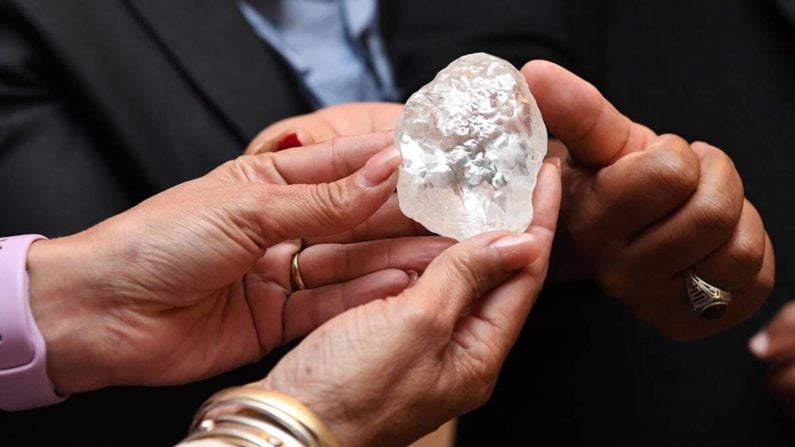
Earlier this month, Botswana’s southern Jwaneng diamond mine, the world’s richest by value, produced the fifth largest overall (third-largest gem-quality) diamond ever found. Measuring 73.00 by 52.00 by 27.00 mm, the new discovery was presented to the country’s president, Mokgweetsi Masisi, on Wednesday. This is the largest diamond to be recovered by Debswana, the historic agreement between DeBeers’ and the government of Botswana, in more than 50 years of operation.
What should happen to it?
How much is it worth? Should it remain in rough form and offered to a museum. Should it be sold so the revenue can benefit Botswana? Only two larger gem-quality diamonds have been unearthed. Both were planned, cut, and fashioned into breathtaking polished creations. What should happen to this incredible, raw crystal, one of the largest ever found? Let’s discuss later.
…In Fourth Place
With a score of 1,111 carats: The Lesedi La Rona
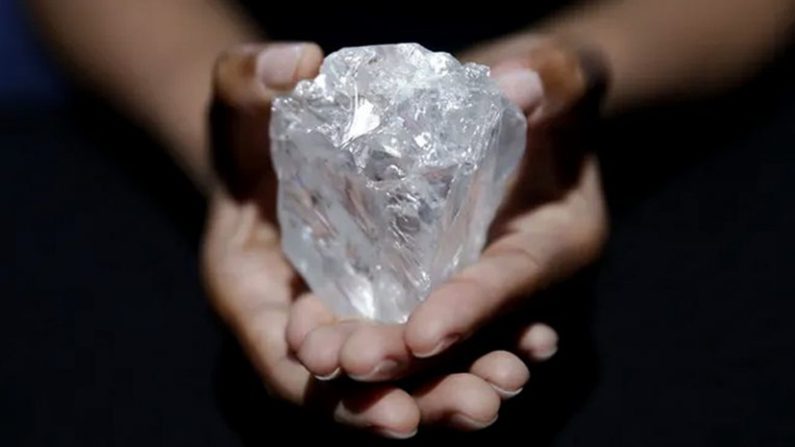
The fourth-largest overall (second-largest gem-quality) diamond ever recovered was the Lesedi La Rona (“Our Light”), which measured 66.40 x 55.00 x 42.00 mm. Unearthed at the Karowe mine, in northern Botswana, in late 2015, it had a raw weight of 1,111 carats. “Our Light” was purchased at 1,109 carats after cleaning by Laurence Graff for a total of $53 million.
Delicious
Lesedi La Rona was fashioned into 67 separate polished diamonds, including this gigantic 302.37-carat emerald shape, which remains the world’s largest square emerald-cut diamond. The 66 other diamonds polished from pieces of the Lesedi La Rona range from 26 carats down to one carat.
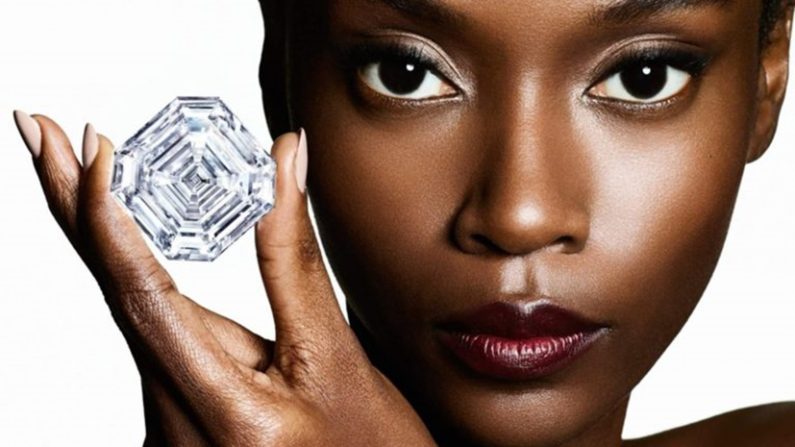
Watch this Graff video to see the transformation of “Our Light” into the 302 carat Graff Lesedi La Rona, the largest square emerald cut diamond in the world, and the largest collection of quality square emerald cut diamonds ever certified by the GIA.
…In Third Place
With a score of 1,174 carats: Lucara’s June 2021 Find
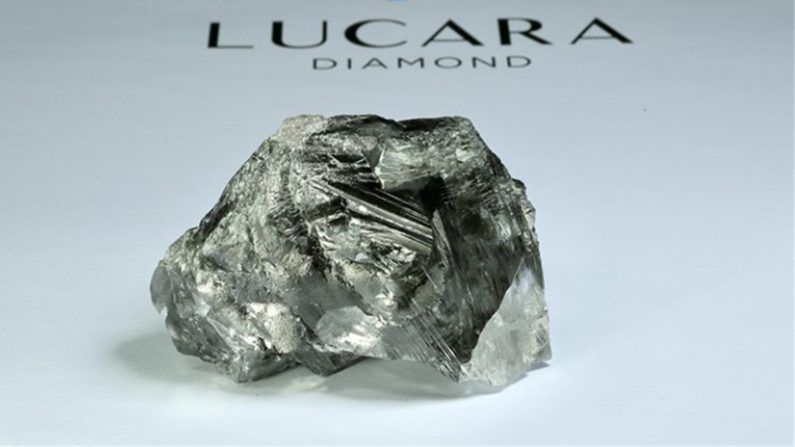
As the diamond world celebrated the 1,098-carat gem-quality find in southern Botswana – it was unceremoniously bumped down the largest-ever list with the recovery of this 1,174-carat rough crystal up north. With this discovery, the Karowe mine has the distinction of becoming the world’s first to produce three rough diamonds weighing over 1,000 carats. With dimensions of 77.00 x 55.00 x 33.00 millimeters, the diamond’s makeup has variable quality. Described as a clivage gem with significant domains of high-quality white gem material, it’s predicted to yield high-value collections.
Luck Be A Lady
Lucara C.E.O. Eira Thomas is the co-founder of Lucara Diamond Corporation and a vibrant, dynamic personality. Her successful discovery of economic diamond deposits in the wilderness of Canada and its disruptive effect on the old DeBeers’ monopoly is a legendary story within the industry.

Eira’s subsequent involvement with the Karowe mine in Botswana has positioned Lucara as one of the world’s most influential diamond industry powers. And speaking of Karowe…
…In Second Place
With a score of 1,758 carats: The Sewelô
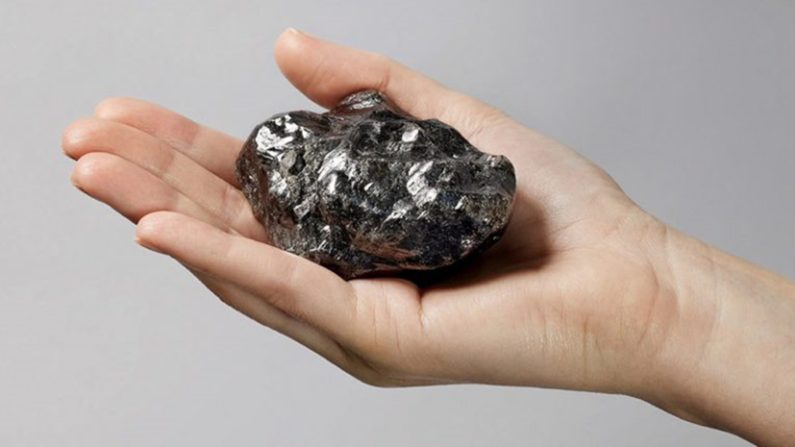
Also discovered at the Karowe Mine in Botswana, this dark, mysterious stranger is named Sewelô (“Rare Find”). It measures 83.00 x 62.00 x 46.00 mm, which is approximately the size of a tennis ball. In keeping with its aura of mystery, the diamond seemed to disappear from the news cycle shortly after making headlines. Then, in January 2020, the world was taken by surprise when French luxury brand Louis Vuitton announced their purchase of Sewelô for an undisclosed sum.

While they are geographical cousins, extracted from the same deposit, Sewelô and Lesedi La Rona are completely different in external appearance. Lesedi was white and transparent, with obvious gem-quality attributes, whereas Sewelô is gray-black and could possibly even be overlooked as a diamond. Given its appearance, there is some debate about “Rare Find’s” suitability for jewelry applications.
Proceeds to the People
Proceeds from diamonds unearthed in Botswana are used to advance national development in the country. Diamonds account for approximately 90% of Botswana’s exports and more than 65% of DeBeers’ diamond production. Agreements between mining houses and the Government of Botswana have transformed the African country into one of the continent’s most prosperous.
…And in First Place (drum roll)
With a score of 3,106 carats: The Largest Diamond from Planet Earth
The Cullinan
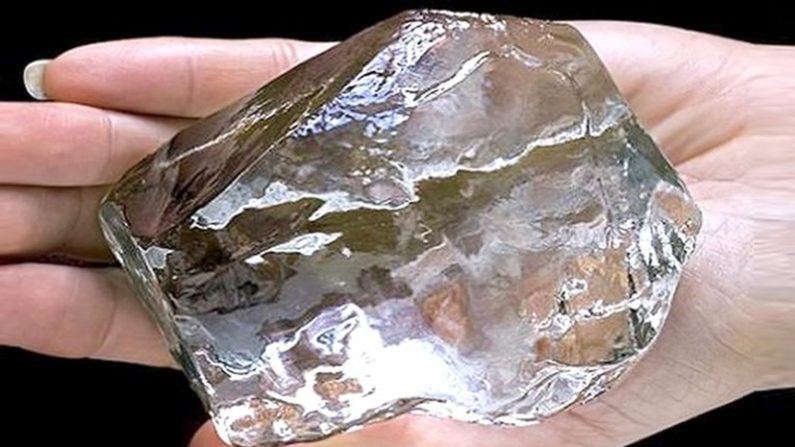
The largest gem-quality diamond ever discovered remains the 3,106.75-carat Cullinan, unearthed in South Africa in 1905. Measuring approximately 50.00 x 50.00 x 100.00 mm, this tremendous find was sold to the then colonial government of the province for 150,000 British Pounds.
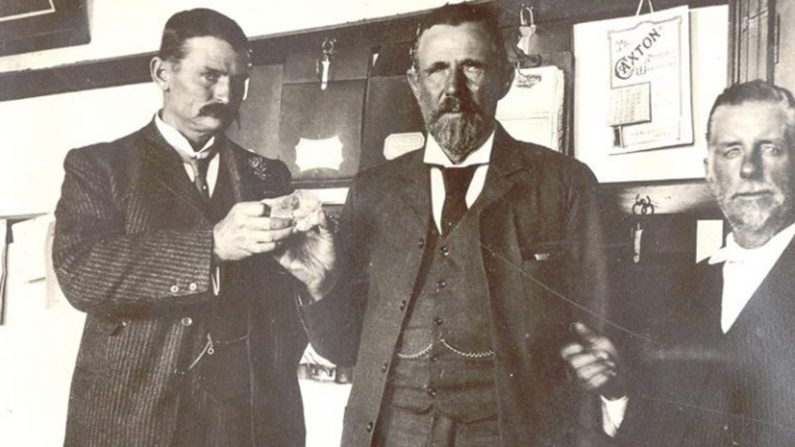
The 1905 publicity photo above shows the Cullinan being handed to Sir Thomas Cullinan, chairman of the Premier mine. The diamond was subsequently gifted to King Edward VII by the Transvaal government to demonstrate loyalty to His Royal Majesty and the British royal family. In a circular honor, on its 100th anniversary in 2003, the Premier mine was renamed The Cullinan Diamond mine.
The Crown Jewels and More
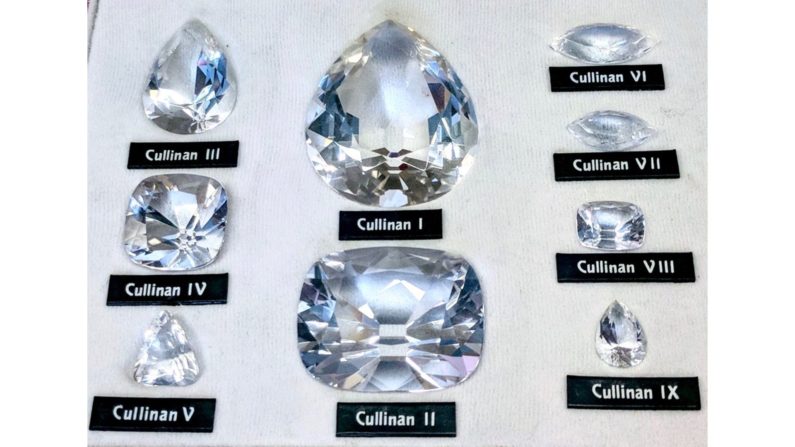
In 1908 Joseph Asscher cut the Cullinan into nine primary stones and 42 smaller stones. Pictured above are replicas of the nine most significant diamonds.
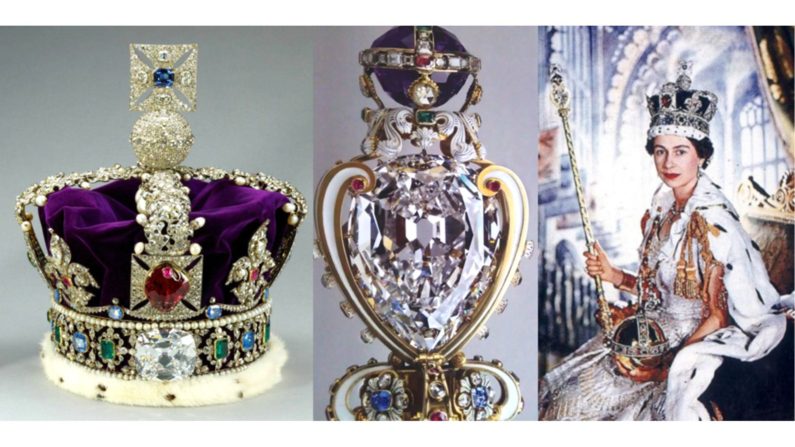
The Cullinan I and II are part of the Crown Jewels of the United Kingdom. Cullinan I, also known as the Star of Africa, weighs 530.2 carats and is part of The Sovereign’s Sceptre with Cross. The Cullinan II, also known as the Lesser Star of Africa, weighs 317.4 carats and is set into The Imperial State Crown.
Of Kings and Queens
From Queen Mary to The Queen Mother to HRM Queen Elizabeth II today, diamonds from the Cullinan have adorned members of the Royal Family for over 100 years. The incredible adornments fashioned from the King of Diamonds, worn by the Queens of England, are worth their own standalone coverage on the PriceScope Blog.
Stay tuned for that.
Finally: The Monster from SPACE
With a score of 3,167 carats: Sergio
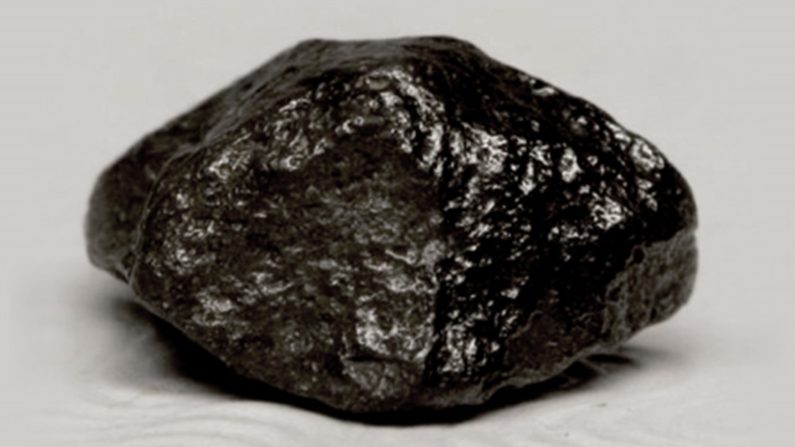
Carbonado, commonly known as black diamond, is one of the toughest forms of natural diamond. It’s an impure, high-density, micro-porous form of polycrystalline diamond consisting of diamond, graphite, and amorphous carbon. Our friend Sergio is the largest carbonado and is technically the largest rough diamond ever found – by a fractional 2% over The Cullinan.
Unearthly Origins
A paper was published in the December 2006 edition of Astrophysical Journal Letters reporting the discovery of hydrogen trace elements in carbonado black diamonds. The details of that discovery imply that carbonado existed long before the Earth was born, arriving here from interstellar space. Further speculation suggests that black diamonds may have been the product of the supernova explosion. They started as diamonds the size of asteroids first, around a kilometer or more in diameter, and broke up while making Earthfall in the two countries where they are found today.
Alas…
Our alien friend did not receive the royal treatment its earth-born cousin The Cullinan was afforded, however. After changing hands in novelty sales a few times, as an interesting sensation, it was ultimately acquired by I. K. Gulland of London in September 1895, where it was broken up into 3.00-6.00 carat pieces and converted into industrial diamond drill bits.
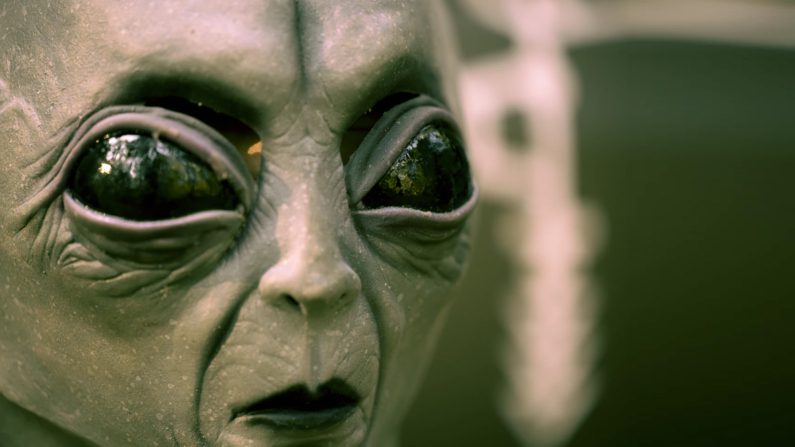
Bummer.
Written by John Pollard
Comments?
What do you think of these 1,000+ carat diamond discoveries? Is it interesting that Botswana has produced 5 of the top 6 diamonds ever discovered, all in the past 6 years? Should poor Sergio have landed somewhere kinder? Was it a rash decision to convert our alien visitor into drill bits? Could we have started an interstellar war?
More Reading
Learn how to define brightness, leakage, contrast, and scintillation on our page Diamond Performance Explained.
Take your diamonds on a brightness, fire, and sparkle test drive: Make Comparisons Like an Expert.
Get fast answers to any question: Ask our community of unbiased independent helpers.
Ready to find your diamond?